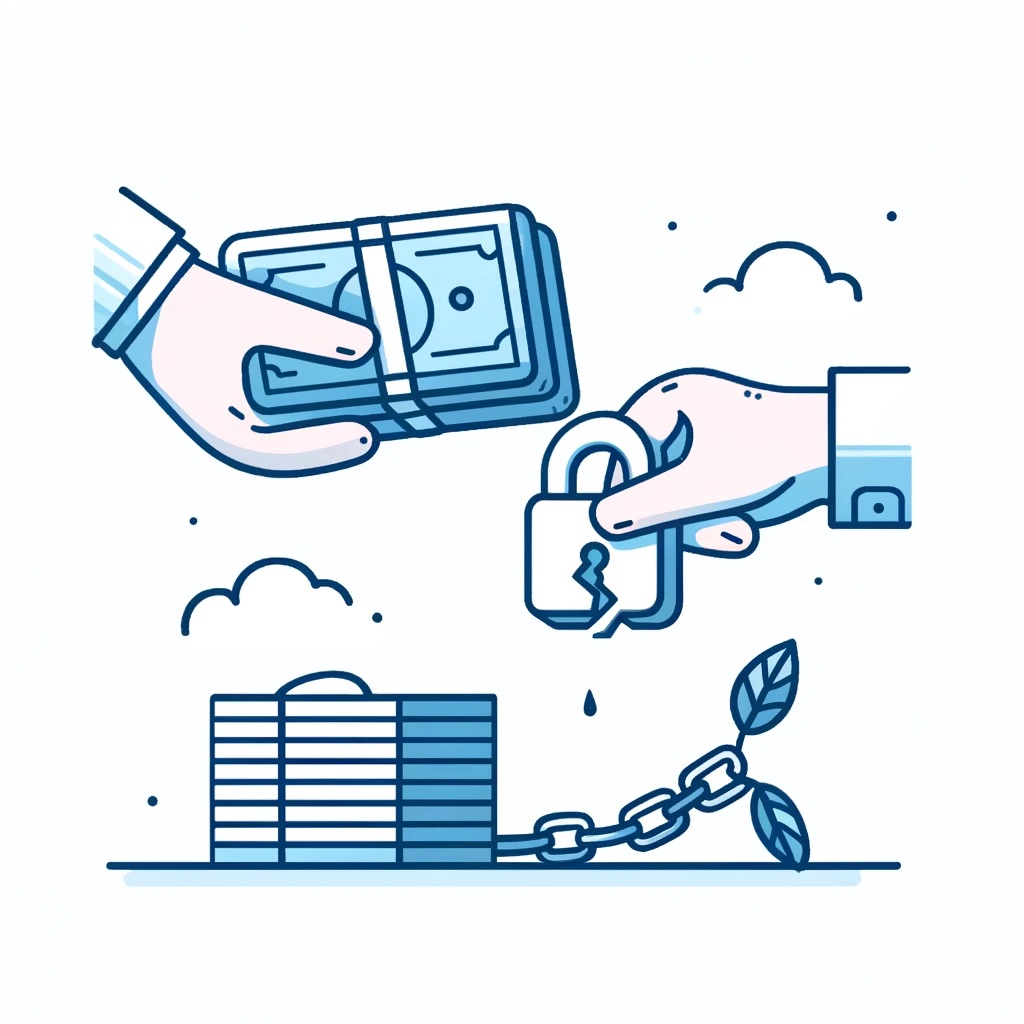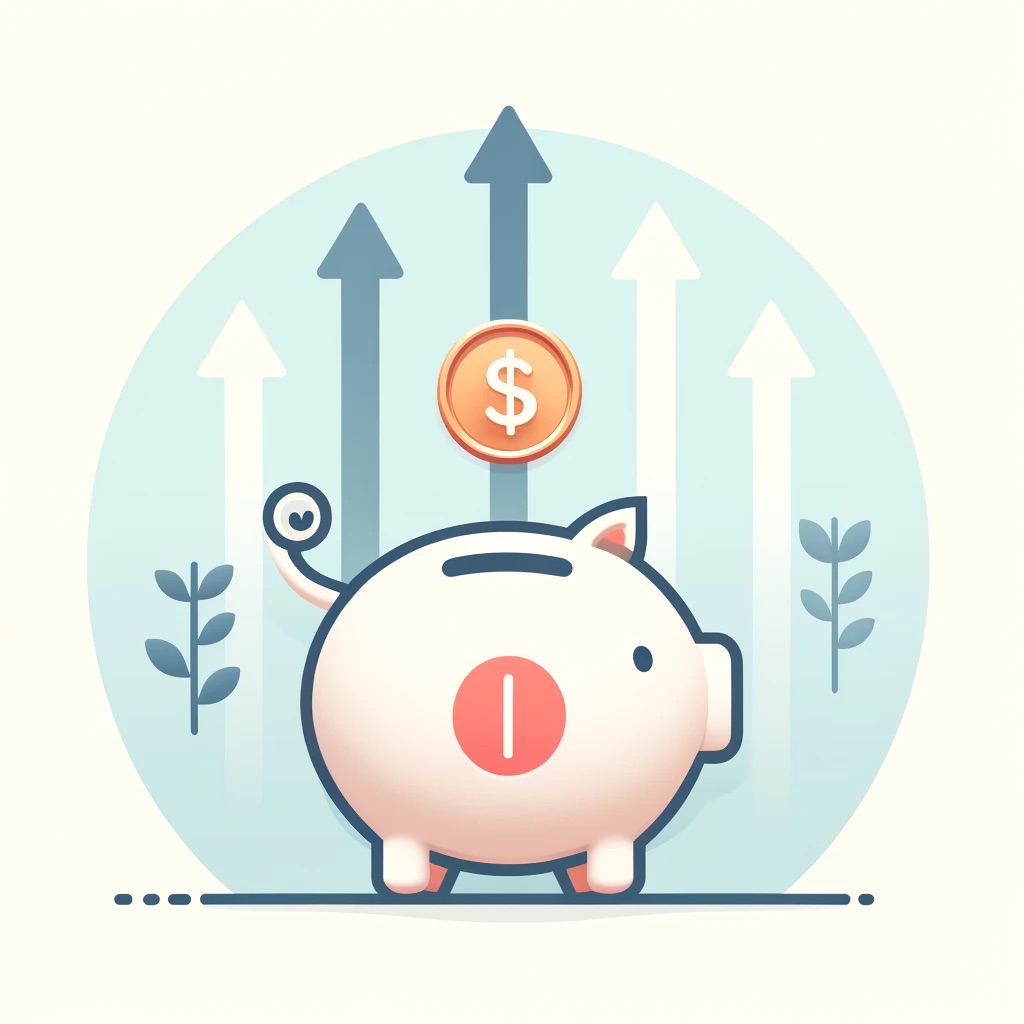Key takeaways
- Balancing debt repayment and saving is essential for achieving long-term financial stability.
- Save money first while prioritizing high interest debts.
- Find a debt payment method and savings strategy that works for you.
‘Is it better to pay off debt or save?’ is a question asked by countless Americans.
The answer is, of course, neither saving money nor paying debts; it’s both.
Having money set aside can keep you from borrowing again to cover unplanned expenses. Paying debts – especially ones with high interest rates – will save you money and relieve stress.
The key is figuring out how to start saving as you make debt payments. We’ll discuss further whether to pay off debt or keep money in savings and how to strike your own balance.
Build an emergency fund or pay off debt?
Save money or pay off debt first? Both are essential for financial security, so how do you decide? There’s no one-size fits all answer. The key lies in striking a balance between the two.
Many financial experts recommend establishing a small emergency fund first and then prioritizing debt payoff. Having a safety net ensures that when an unexpected expense pops up, you won’t resport to credit cards to cover it. How much money you need depends on your personal situation. Some experts say start with $500, while others want you to have three to six months’ worth of living expenses. Dave Ramsey, a renowned personal finance writer, recommends setting aside $1,000 before focusing on repaying what you owe.
On the other hand, if you have high interest debts – anything with an APR over 15% – then it’s good to pay them off as soon as possible. Interest charges will eat up your monthly budget and significantly increase the amount you owe.
The ideal solution is to save and pay off accounts simultaneously.
Pay debt fast
There are plenty of debt payoff strategies to help you pay bills efficiently.
Prioritize high interest debt and overdue accounts
The debt you should prioritize paying is the one with the highest interest rate. When you have a high APR, the interest charges can quickly accumulate. This is especially true with credit cards, as almost all come with high APRs.
Paying off high interest credit card debt should be a top priority. Try to pay more than the minimum payment each month. Only making the minimum payments means you’ll accumulate more interest, prolonging the time it takes to pay off the balances. Reducing high interest credit card debt can free up more money for savings and investments.
It’s also good to bring delinquent accounts up to date. Past-due accounts will hurt your credit and lead to additional fees and interest charges. Contact your creditors to discuss potential payment plans or hardship programs to make repayment easier.
Debts like a car loan or a mortgage that have a lower interest rate are less of a worry.
Do you want an efficient debt repayment plan?
Consolidate debts
Debt consolidation is a popular strategy that helps you pay what you owe effectively and ideally for less. It works by consolidating multiple debts into a single monthly payment. This simplifies your bills and saves you money in interest.
There are several ways to do this:
- Personal Loan: You can take out a debt consolidation loan from a bank or credit union. These loans typically have fixed interest rates and set repayment terms.
- Balance Transfer Credit Card: Apply for a card with a low or 0% introductory APR on balance transfers. Be sure to pay the credit card balance in full before the introductory period ends.
Both methods come with fees and require you to have good to excellent credit in order to secure a lower APR.
A third consolidation option is a debt management plan (DMP) from a nonprofit credit counseling agency. DMPs roll all your debts into one without you having to take out a loan or balance transfer card. The credit counseling agency will also negotiate with creditors to lower your interest rate or waive fees. The result is a single affordable monthly payment and a set time frame to be out of debt.
Considering debt consolidation?
Click here to find out how consolidation affects your credit.
Additional debt relief methods
Consolidation is popular, but there are plenty of other strategies, including debt snowball or debt avalanche, debt settlement, and bankruptcy.
The debt snowball method is when you pay off the smallest amounts first to build momentum and motivation, all while making the minimum payments on your other debts.
The debt avalanche method has you prioritize the account with the highest interest rate first. Paying off high interest accounts first can save you thousands.
Debt settlement is when you pay a reduced amount. You or a third party will negotiate a lump sum payment with your creditors. While paying less sounds great, settling accounts will hurt your credit score, has tax implications, and the debt settlement company will charge a fee.
Bankruptcy is a third option, but this is usually a last resort when everything else has failed.
The right method depends on your financial situation.
Why it’s worth repaying debts

There are numerous benefits of paying off debt.
- Pay less interest
- Lower credit utilization rate
- Increase your credit score
- Reduce stress
The primary benefit is, of course, that the more you reduce the amount you owe, the less interest you’ll accumulate and the more money you’ll have in your budget to save.
Build an emergency fund
When deciding between an emergency fund vs. paying off debt, many personal finance writers and our editorial team recommend saving first.
Your emergency savings acts as a safety net for unexpected expenses. Medical emergencies, car repairs, or job loss can happen at any time. Having a safety net can prevent you from borrowing the next time unforeseen costs arise.
You don’t have to start with a large amount. Ideally, you want to be able to cover a few months of living expenses. Figure out a manageable amount and save consistently. Our editorial team recommends setting a goal of one month’s living expenses and working your way up from there.
Start saving for retirement
Paying what you owe is important, but so is saving for the future. Having a retirement account ensures long-term financial security. Starting early allows you to take advantage of compound interest which can significantly grow your savings over time.
Allocate 10% to 15% of your pretax income to your retirement plan. If this is too much, try a smaller percentage, but it’s important to set something aside for your future.
Benefit from your employer’s 401(k) match program
Find out if your employer offers a 401(k) matching contribution. A 401(k) employer match is essentially free money that can boost your individual retirement savings. For instance, if your employer matches up to 5% of your salary, contributing at least that amount ensures you receive the full match. This can significantly enhance your retirement fund over time. Make sure to contribute the required amount so you can take advantage of the extra cash.
How to save money
Building savings can be tough, especially while paying debts. A few tried and true methods include:
- Set a realistic goal
- Try the 50/30/20 budget
- Pay yourself first
- Open a savings account

Setting a realistic goal will help keep you motivated and not discouraged. Put what you can aside each month, even if it’s only $10. Don’t shoot for the stars at first. The key is to be consistent and to save.
The 50/30/20 budget is when you break your gross income down into categories.
- 50% goes to basic expenses like housing, groceries, and utilities.
- 30% goes to whatever you want.
- 20% is put towards debt and savings.
This budgeting method ensures that you live within your means, have some fun money to spend as you like, and get to save.
Paying yourself first is when you put a portion of your paycheck into savings as soon as you get it. Many employers will let you split your direct deposit so that you can send a percentage of your pay directly into your savings account and the remainder to your checking account. You never see the money and so are never tempted to spend it. Automating your savings helps ensure that you consistently save a portion of your income without having to think about it.
Open a savings account. Don’t keep your money in a checking account. There are plenty of high yield savings accounts that offer a high annual percentage yield (APY). The high APY will help your money grow faster as you earn more interest.
Facing a lawsuit?
Pay off debt or save? Find a balance
Is paying off debt worth it? Yes, it can save you thousands, relieve stress, and improve your credit score. Your focus should be on paying high interest debt first, as their cost can add up fast and outweigh the benefits of saving.
However, it’s vital that you also have emergency savings so you don’t have to borrow money. Putting off retirement savings for too long also means that you will lose out on earning interest. It’s a lot to think about.
In the end, you have to strike a balance between the two. Pay your dues, but don’t forget to save too.
Go to MoneyFor for more tips and tricks.
Frequently asked questions
Bottom line
The eternal question of whether it’s better to save or pay creditors does not have an easy answer. You need to consider your full financial picture. Do you have lots of high interest accounts? Do you have any money set aside in an emergency fund? Have you started saving for retirement? All these questions can be overwhelming. Take it one step at a time.
Start by paying high interest bills and setting aside a small amount of money in a savings account with a high APY. As you reduce what you owe, put more money into savings. The idea is to strike a balance. Remember, saving money sets up a buffer so that you don’t have to take out a loan or use a credit card next time an unexpected expense pops up, and they will pop up.
With a balanced approach, you can pay everything you owe and have savings.

